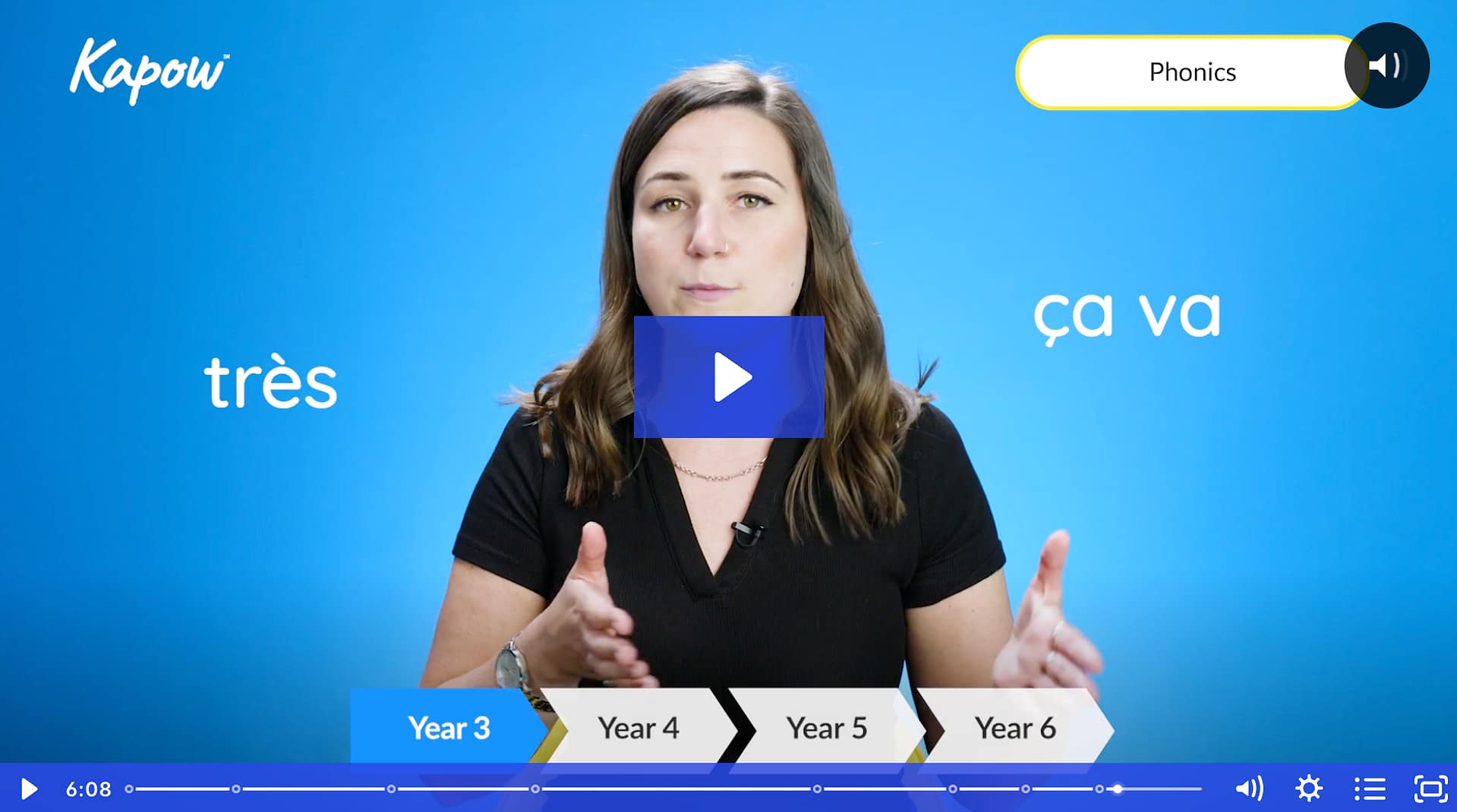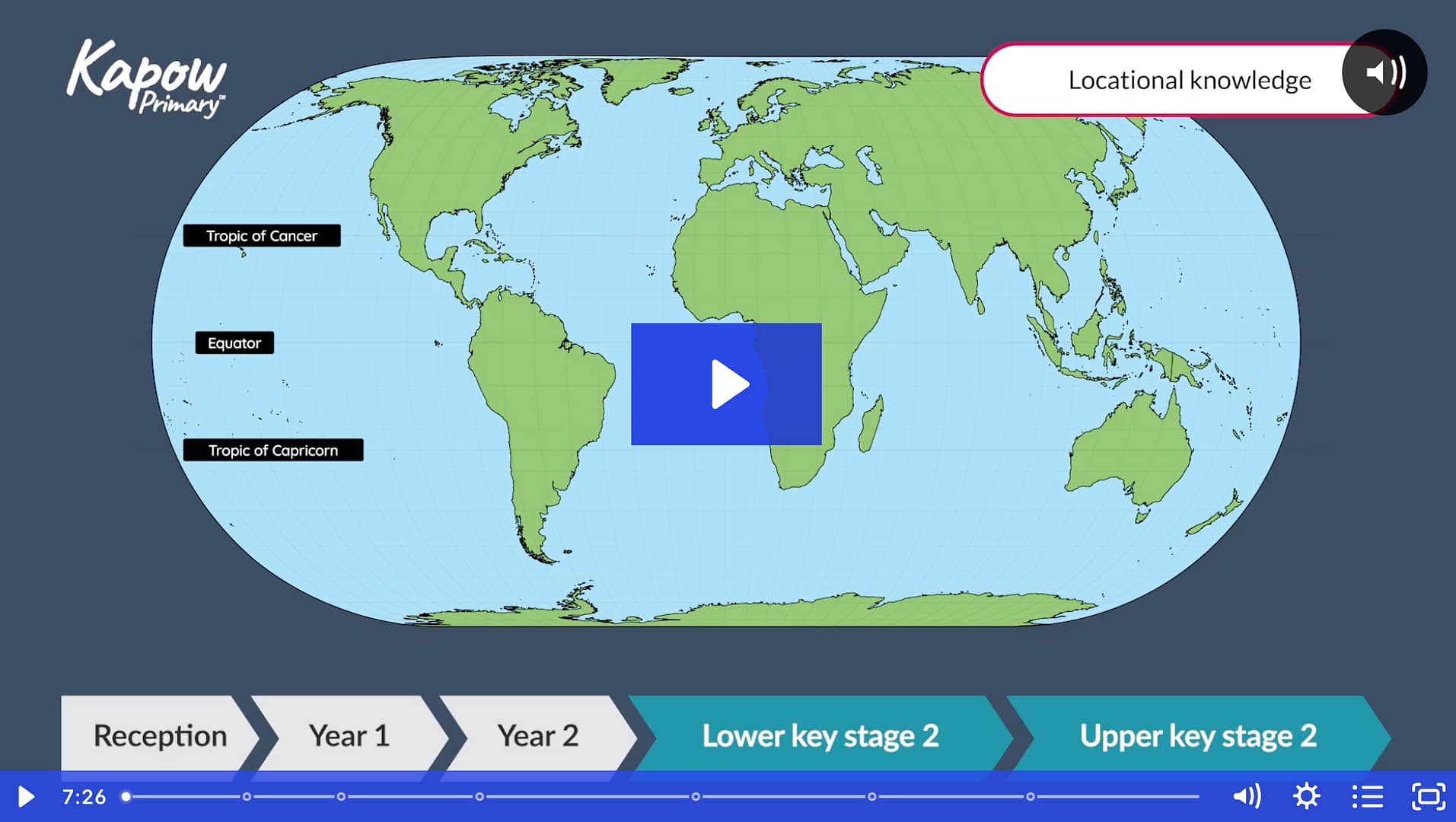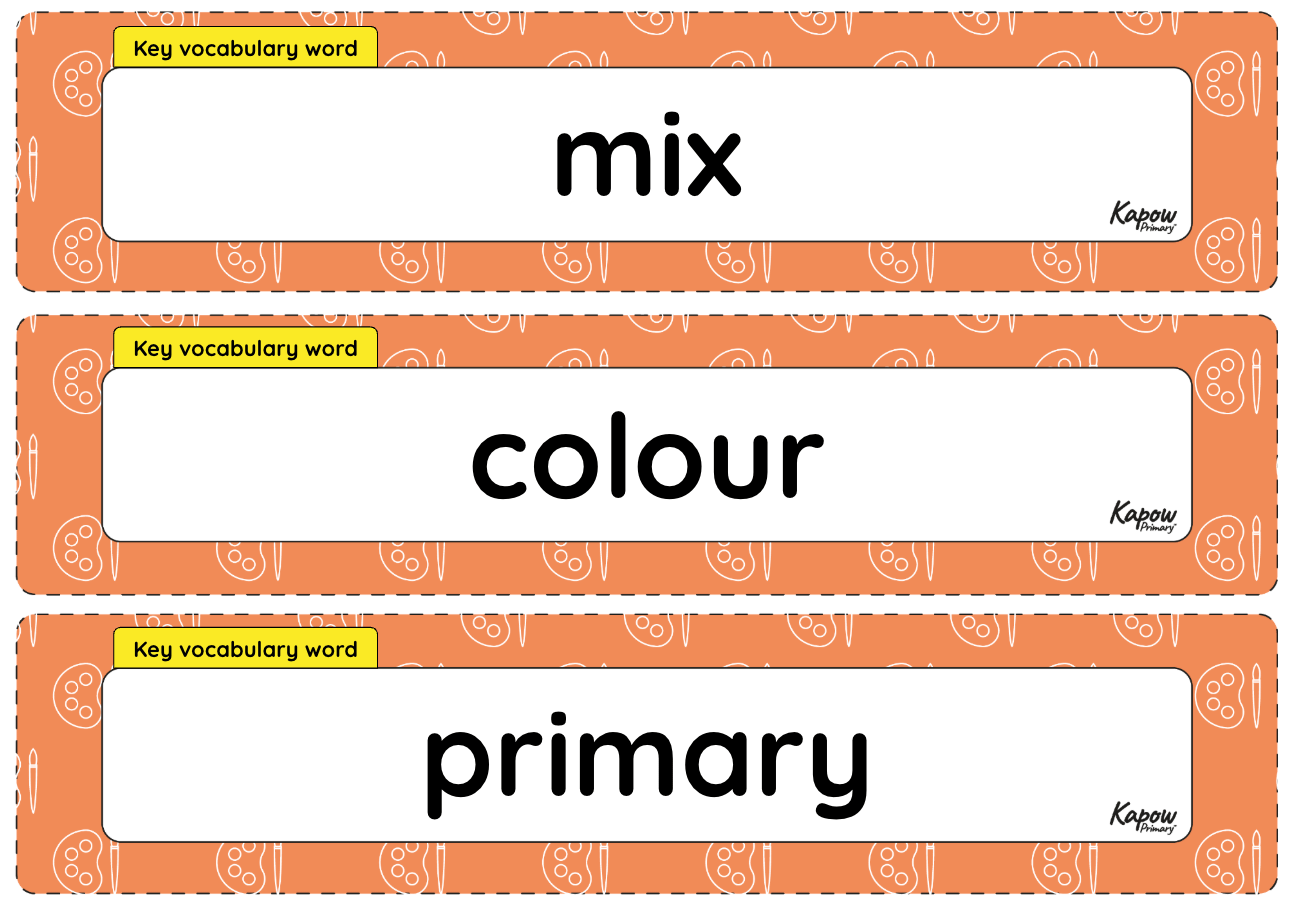This video helps Spanish subject leaders gain an understanding of the Kapow Primary Spanish scheme of work, describing the knowledge and skills that pupils acquire and how they make progress during primary school.

This video helps Spanish subject leaders gain an understanding of the Kapow Primary Spanish scheme of work, describing the knowledge and skills that pupils acquire and how they make progress during primary school.

This video helps French subject leaders gain an understanding of the Kapow Primary French scheme of work, describing the knowledge and skills that pupils acquire and how they make progress during primary school.

This video helps Geography subject leaders gain an understanding of the Kapow Primary Geography scheme of work, describing the knowledge and skills that pupils acquire and how they make progress during primary school.

This unit vocabulary display includes keywords from the unit Art and design, Year 2, Painting: Colour mixing and additional unit-specific words that may be helpful in a display.

This unit vocabulary display includes keywords from the unit Computing, Year 2, Programming 1: Algorithms and debugging and additional unit-specific words that may be helpful in a display.


This video aims to help History subject leaders gain an understanding of the Kapow Primary History scheme of work, describing the knowledge and skills and how children make progress during primary school.
